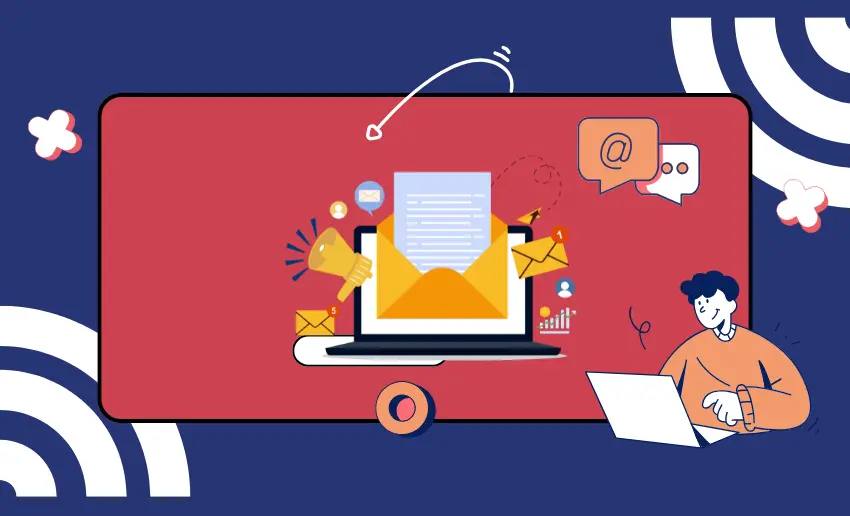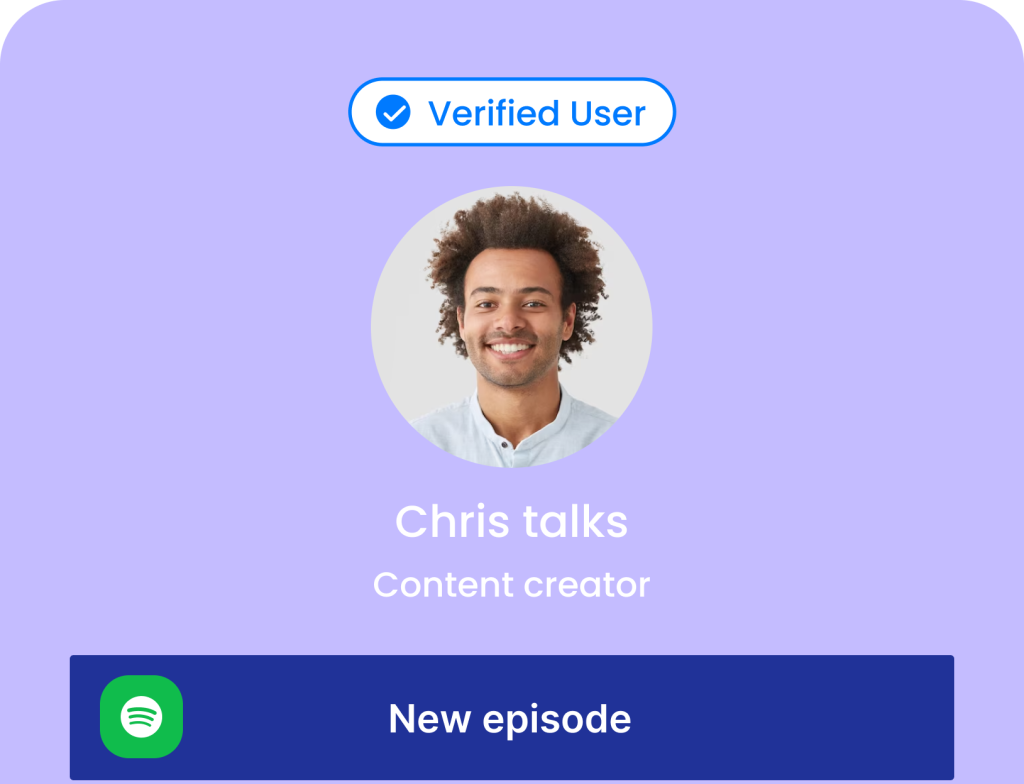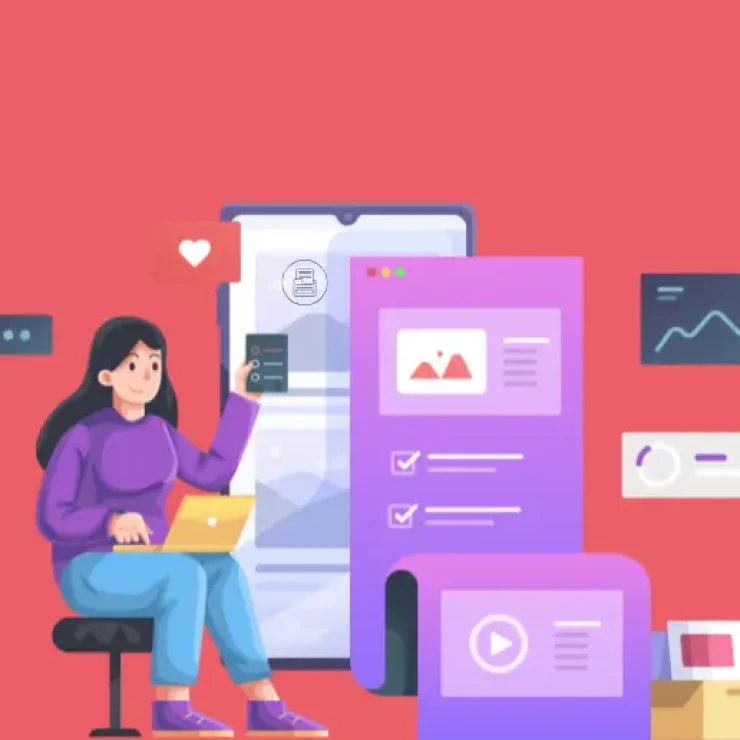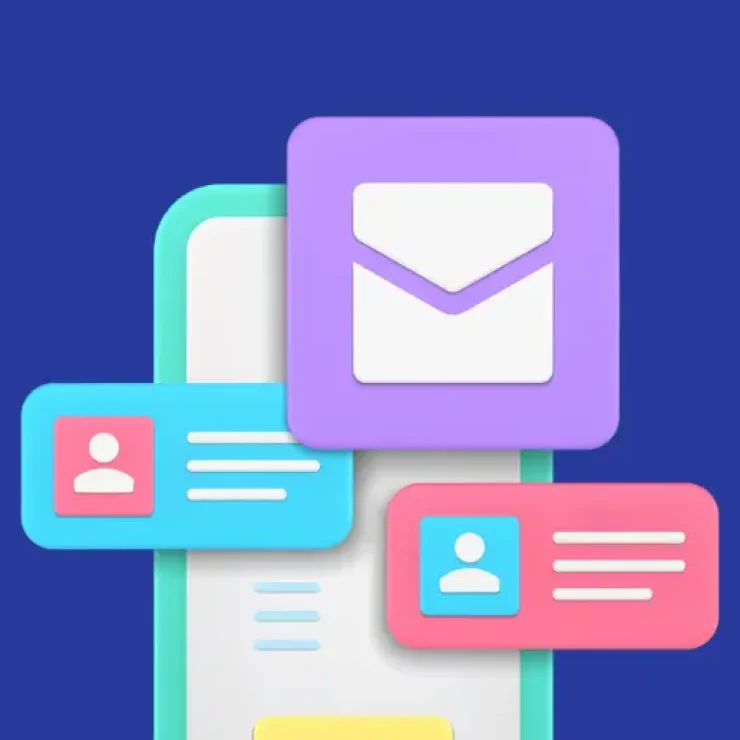Email marketing is one of the most powerful ways to sell your products and services. Unlike social media, where algorithms control who sees your content, email marketing gives you direct access to your audience. This means you can promote your offers, share valuable insights, and build customer relationships without worrying about changing platform rules.
To enjoy the perks mentioned above, creators need to have a strong email marketing strategy that helps them connect with potential buyers in a more personal way. Whether you’re a creator selling digital products, offering services, or sharing exclusive content, email allows you to engage with your audience consistently.
If you’re not using email marketing yet, you might be missing out on a steady income stream. In this guide, we’ll show you exactly how to use email marketing to sell your products and services effectively.
Why email marketing works for selling
Email marketing remains one of the most effective ways to sell and grow your business. Here’s why:
1. Direct and personal communication
Unlike social media, where algorithms control visibility, email lets you connect directly with your audience. Personalizing emails with names, past purchases, or interests improves engagement and boosts email conversion rates.
2. High return on investment (ROI)
Email marketing is cost-effective and delivers a strong return. With a well-planned email marketing strategy, businesses can generate significant sales with minimal spending on ads or promotions.
3. Automation saves time
Automated email sequences help nurture leads, send reminders, and follow up with customers effortlessly. This keeps your audience engaged without constant manual effort.
4. Builds long-term customer relationships
Regular emails keep your brand top-of-mind. Providing value through newsletters, exclusive offers, and personalized recommendations builds trust with the audience which in turn improves loyalty.
5. Measurable and optimizable
Email marketing provides creators with clear data such as open rates, click-through rates, and conversions. All of these allow you to track success and refine your strategy for better results.
How to use email marketing to sell your products and services
Email marketing goes beyond sending emails randomly and requires the delivery of real value to the audience. Every email should serve a purpose, offering useful content that keeps readers engaged and encourages conversion.
To help you make the most of your email marketing strategy, we’ve put together a list of proven tactics that will help you effectively sell through email while respecting your audience’s time and attention:
1. Use professional email newsletter templates
First impressions matter, and your email design plays a key role in grabbing attention. A well-structured newsletter template makes your emails look polished, easy to read, and engaging. Using a professionally designed template helps you maintain brand consistency while making your content more visually appealing.
Most email marketing platforms offer pre-made templates that you can customize to match your brand’s colors, fonts, and style. A clean and mobile-friendly layout ensures your emails look great on any device. This improves readability, increases engagement, and ultimately boosts email conversion.
Choose a layout that highlights your message clearly, includes strong calls-to-action (CTAs), and guides readers toward making a purchase. A well-designed email can be the difference between a customer clicking through or ignoring your offer.
2. Use subject lines that get opened
Your subject line is the first thing your audience sees, and it determines whether they will open your email. A weak, boring, or generic subject line can make your email go unnoticed, while a compelling one can significantly improve your email marketing strategy.
To craft an attention-grabbing subject line, keep it short, clear, and relevant to your audience. Use action words, curiosity, or urgency to encourage clicks. For example, instead of “Check Out Our New Product,” try “Limited Stock! Get 20% Off Before Midnight.” Optimizing this small but crucial element can help you drive higher engagement and sell through email more effectively.
3. Persuasive email copy
Once your email is opened, the content needs to capture attention and drive action. A strong email marketing strategy includes well-crafted copy that educates, entertains, and persuades. Your email should tell a story, highlight customer pain points, and offer a clear solution which is your product or service.
Keep your message concise and easy to read. Use short paragraphs, bullet points, and subheadings to improve readability. Avoid sounding overly salesy; instead, focus on value-driven content that shows how your offering solves a problem.
Finally, always end with a strong CTA. This should guide readers toward the next step whether it’s making a purchase, signing up for a webinar, or exploring your latest product launch.
4. Using visuals and branding
Any serious creator considering email marketing for selling should know that a well-designed email must contain stunning visuals. High-quality images, videos, and branded elements can enhance engagement and reinforce your brand identity. Including product images, behind-the-scenes content, or demonstration videos makes your emails more interactive and helps customers visualize your offerings.
Your branding should be consistent across all emails, from your logo and color scheme to the font style and tone of voice. This helps in building brand recognition and trust. Additionally, strategically placed visuals can highlight key information, break up text-heavy emails, and make your message more compelling.
5. Clear and compelling CTAs
Your email should always have a clear purpose, and a strong call-to-action (CTA) ensures your audience knows what to do next. If you want them to make a purchase, sign up for a webinar, or download a resource, your CTA should be direct, persuasive, and easy to find.
Use action-oriented language like “Shop Now,” “Claim Your Discount,” or “Get Started Today.” Keep the CTA button visible and ensure it stands out with contrasting colors. Avoid vague phrases like “Click Here” that don’t clearly convey value.
A strong CTA is essential to sell through email, as it turns interest into action. Test different CTAs to see which ones drive the best response and refine your approach based on results.
6. Create automated sequences
Manually sending emails to each subscriber is time-consuming. Email automation allows you to set up sequences that nurture leads, promote products, and follow up with customers effortlessly.
Automated welcome sequences introduce new subscribers to your brand, while drip campaigns educate and build trust over time. You can also set up promotional sequences for product launches or upsell campaigns for existing customers.
A well-structured email marketing strategy automates the customer journey, ensuring consistent engagement and higher conversions without extra manual effort.
7. Send abandoned cart emails
Many customers add items to their shopping cart but leave before completing the purchase. Sending a well-timed abandoned cart email can remind them to return and complete their order.
A strong abandoned cart email includes a reminder of the items left behind, a clear CTA to complete the purchase, and possibly an incentive like free shipping or a discount.
Personalization, such as addressing the recipient by name or showcasing specific products they viewed, can make these emails even more effective. Implementing abandoned cart recovery emails can help you sell through email and recover lost sales effortlessly.
8. Use triggered emails
Triggered emails are automated messages sent based on specific customer actions or milestones. For example, a welcome email when someone subscribes, a thank-you email after a purchase, or a special birthday discount email.
These emails are highly relevant and timely, making them more likely to be opened and acted upon. They also enhance customer relationships by showing that you value and recognize your subscribers. Implementing triggered emails as part of your email marketing strategy ensures continuous engagement with your audience and drives consistent conversions.
9. Avoid spam filters
Even the best emails won’t be effective if they end up in the spam folder. To improve email deliverability, avoid spam-triggering words like “Free Money” or “Congratulations” in subject lines. Ensure your emails have a healthy balance of text and images, as image-heavy emails often get flagged.
In addition to the above, encourage subscribers to whitelist your email address and avoid sending too many emails in a short period. Using a reputable email marketing service helps maintain a strong sender reputation.
Important email marketing metrics to track
Tracking the right metrics is key to improving your email marketing strategy and increasing sales. If you want to sell through email successfully, you need to know what’s working and what needs improvement. Here are the most important email metrics to monitor:
- Open Rate: This shows how many people open your emails. A low open rate means you may need better subject lines or a stronger sender reputation.
- Click-Through Rate (CTR): Measures how many people click on links inside your emails. A higher CTR means your content and call-to-action (CTA) are effective.
- Conversion Rate: Tracks how many email recipients take action such as making a purchase after clicking a link. This is crucial for measuring email conversion success.
- Bounce Rate: The percentage of emails that never reach inboxes. High bounce rates can hurt your sender reputation.
- Spam Complaints: This measures how many people marked your email as spam in their inbox, using options like “Mark as Spam” in Gmail, Yahoo Mail, or Outlook. A high number of complaints can harm your email deliverability and sender reputation.
- Unsubscribe Rate: Shows how many people opt out of your emails. If it’s too high, you may need to adjust your content or sending frequency.
Post-email marketing bonus tips
Your work doesn’t end after sending an email. To maximize your email marketing strategy and improve email conversion, follow these bonus tips:
- Analyze performance data: Review open rates, click-through rates, and conversions to see what’s working and what needs improvement.
- A/B Test future campaigns: Experiment with different subject lines, email designs, and CTAs to find the best-performing elements.
- Engage inactive subscribers: Reconnect with those who haven’t engaged by offering exclusive content, discounts, or a re-engagement campaign.
- Clean your email list: Remove invalid or inactive emails to improve deliverability and keep engagement high.
- Repurpose email content: Turn your best-performing emails into blog posts, social media updates, or video content for more visibility.
Conclusion
Email marketing is a powerful way to connect with your audience, build trust, and increase sales. Creators can leverage this by creating a strong email marketing strategy. You can engage your subscribers with well-designed emails, compelling subject lines, and personalized content. The trick is to ensure that each email you send should be clear, valuable, and action-driven.








